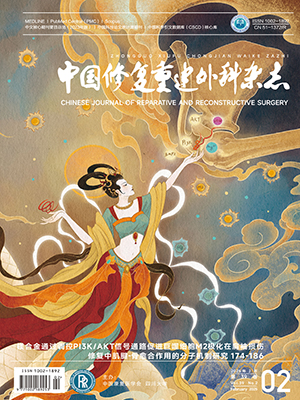| 1. |
Horisberger M, Hintermann B, Valderrabano V. Alterations of plantar pressure distribution in posttraumatic end-stage ankle osteoarthritis. Clin Biomech (Bristol, Avon), 2009, 24(3): 303-307.
|
| 2. |
Haraguchi N, Ota K, Tsunoda N, et al. Weight-bearing-line analysis in supramalleolar osteotomy for varus-type osteoarthritis of the ankle. J Bone Joint Surg (Am), 2015, 97(4): 333-339.
|
| 3. |
Hintermann B, Ruiz R, Barg A. Novel double osteotomy technique of distal tibia for correction of asymmetric varus osteoarthritic ankle. Foot Ankle Int, 2017, 38(9): 970-981.
|
| 4. |
Hongmou Z, Xiaojun L, Yi L, et al. Supramalleolar osteotomy with or without fibular osteotomy for varus ankle arthritis. Foot Ankle Int, 2016, 37(9): 1001-1007.
|
| 5. |
Zhao HM, Liang XJ, Li Y, et al. Supramalleolar osteotomy with distraction arthroplasty in treatment of varus ankle osteoarthritis with large talar tilt angle: A case report and literature review. J Foot Ankle Surg, 2017, 56(5): 1125-1128.
|
| 6. |
Takakura Y, Tanaka Y, Kumai T, et al. Low tibial osteotomy for osteoarthritis of the ankle. Results of a new operation in 18 patients. J Bone Joint Surg (Br), 1995, 77(1): 50-54.
|
| 7. |
Tanaka Y, Takakura Y, Hayashi K, et al. Low tibial osteotomy for varus-type osteoarthritis of the ankle. J Bone Joint Surg (Br), 2006, 88(7): 909-913.
|
| 8. |
梁景棋, 赵宏谋, 张言, 等. 踝上截骨结合关节牵开治疗距骨倾斜角增大的内翻型踝关节骨性关节炎: 病例报告与文献回顾. 足踝外科电子杂志, 2017, 4(3): 44-47.
|
| 9. |
梁景棋, 张言, 温晓东, 等. 内翻型踝关节炎踝上截骨联合内侧牵开与否比较. 中国矫形外科杂志, 2021, 29(17): 1537-1542.
|
| 10. |
Liang JQ, Wang JH, Zhang Y, et al. Fibular osteotomy is helpful for talar reduction in the treatment of varus ankle osteoarthritis with supramalleolar osteotomy. J Orthop Surg Res, 2021, 16(1): 575. doi: 10.1186/s13018-021-02732-8.
|
| 11. |
Zhou BF. Cooperative meta-analysis group of the working group on obesity in china. Predictive values of body mass index and waist circumference for risk factors of certain related diseases in Chinese adults-study on optimal cut-off points of body mass index and waist circumference in Chinese adults. Biomed Environ Sci, 2002, 15(1): 83-96.
|
| 12. |
Krähenbühl N, Zwicky L, Bolliger L, et al. Mid- to long-term results of supramalleolar osteotomy. Foot Ankle Int, 2017, 38(2): 124-132.
|
| 13. |
Knupp M. The use of osteotomies in the treatment of asymmetric ankle joint arthritis. Foot Ankle Int, 2017, 38(2): 220-229.
|
| 14. |
Krähenbühl N, Akkaya M, Deforth M, et al. Extraarticular supramalleolar osteotomy in asymmetric varus ankle osteoarthritis. Foot Ankle Int, 2019, 40(8): 936-947.
|
| 15. |
Ahn TK, Yi Y, Cho JH, et al. A cohort study of patients undergoing distal tibial osteotomy without fibular osteotomy for medial ankle arthritis with mortise widening. J Bone Joint Surg (Am), 2015, 97(5): 381-388.
|
| 16. |
Kobayashi H, Kageyama Y, Shido Y. Treatment of varus ankle osteoarthritis and instability with a novel mortise-plasty osteotomy procedure. J Foot Ankle Surg, 2016, 55(1): 60-67.
|
| 17. |
Lai L, Wang Y, Wu Y, et al. Outcomes of intermediate stage varus ankle arthritis treated by supramalleolar osteotomy. J Orthop Surg (Hong Kong), 2022, 30(3): 10225536221132769. doi: 10.1177/10225536221132769.
|
| 18. |
Ayyaswamy B, Jain N, Limaye R. Functional and radiological medium term outcome following supramalleolar osteotomy for asymmetric ankle arthritis-A case series of 33 patients. J Orthop, 2020, 21: 500-506.
|




